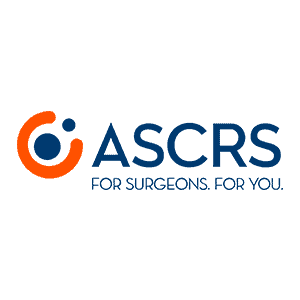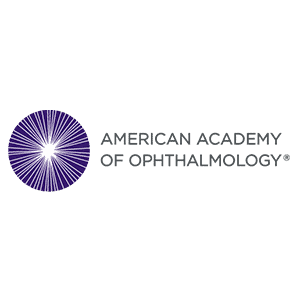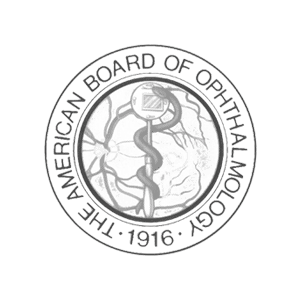Common Keratoconus Questions
What is keratoconus?
Keratoconus is a progressive and painless eye disease that causes a thinning of the cornea, allowing it to form into a conelike shape rather than its usual round shape. The condition most often affects both eyes and occurs in men and women equally. It generally begins to develop during the teen years and gets progressively worse as you get older.
Researchers are still investigating the underlying cause of keratoconus but think that the corneal changes happen due to an imbalance of enzymes in the cornea, which makes the cornea more susceptible to oxidative damage.
You could be at risk of keratoconus if it runs in your family.
What are the symptoms of keratoconus?
Vision changes are the most common symptom of keratoconus. The changes in the cornea cause nearsightedness and astigmatism, creating distorted and blurred vision. You might also be more sensitive to light and glare.
As your cornea continues to thin and change shape, glasses and contact lenses no longer improve your vision.
Is keratoconus inherited or genetic?
Yes. Keratoconus is a polygenic disease, meaning it is due to a problem in corneal protein synthesis caused by a multitude of genetic and environmental influences. If you or a family member has keratoconus, it may be a good idea to consider genetic testing of siblings or offspring to determine their risk for developing keratoconus.
At CLVC, we offer AvaGen by Avellino Labs that screens for the most common 400 genes associated with keratoconus and other corneal dystrophies with a simple and painless cheek swab. This test is not covered by most insurances at this time.
How is keratoconus treated?
Early on, patients can achieve good vision with glasses or contact lenses. As the cornea begins to steepen, it may become necessary to convert to gas permeable contact lenses. As the cornea continues to change, further treatment may be needed. Scleral Contact lenses, such as the Acculens, can be tried when the cornea becomes too steep to wear gas permeable hard contact lenses.
Scleral contact lenses could then be recommended when the gas permeable contact lenses are no longer effective. These contact lenses are larger than the gas permeable lenses and cover the sclera, the white of your eye They’re considered more comfortable than the gas permeable contact lenses.
If you have advanced keratoconus, the team at Cohen Laser & Vision Center also offer Intacs®, corneal implants that can flatten the conelike distortion of your cornea, improving your vision. The procedure is performed under a local anesthetic and takes about 15 minutes. Once placed, the Intacs should last the rest of your life.
In severe cases, a cornea transplant may be necessary to correct your vision.
Keratoconus is a progressive condition that significantly affects your vision and quality of life. For comprehensive care from a compassionate team of vision experts, call Cohen Laser & Vision Center today or request an appointment online.
How is Ecstasia treated?
Patients who develop Ectasia after LASIK currently have two treatment options: RGP contact lenses or a Corneal Transplant. Basic research suggests a new potential treatment option combination:
- Cross Linking (to prevent progression)
- INTACS (to treat higher order aberrations
- PRK to treat residual regular astigmatism
If the patient has regular astigmatism which can be refracted to 20/30 or better, step 2) INTACS can be skipped.
Research on the corneal flap created during LASIK demonstrates that the residual flap does not contribute significantly to the biomechanical strength of the cornea. Additionally, mitomycin can prevent scarring on the flap following PRK, these two findings as well as clinical research and experience suggest that this treatment maybe a good option for patients with ECTASIA after LASIK.
What is Collagen Cross Linking- CXL?
COLLAGEN CROSS LINKING – CXL is a procedure to manage cornea ectasia (weakening). This procedure is an in-office, 30 minute treatment to restore biomechanical stability to the cornea and prevent further progression. The cornea is soaked with Riboflavin (vitamin B2) and then exposed to ultraviolet A (UVA) light. The riboflavin absorbs the UVA and this reaction causes covalent bonds to form within and between the collagen molecules (crosslinks). These crosslinks stiffen and strengthen the cornea thus diminishing the tendency for thinning, weakening and progression of the keratoconus. The most current and effective therapies combine INTACS with collagen cross linking to treat keratoconus.
What is INTACS?
INTACS are corneal implants to flatten the cornea in patients with keratoconus and improve vision. For those patients whose vison cannot be improved with glasses or contact lenses, INTACS offers a less invasive treatment compared to a cornea transplant.
INTACS offers the following benefits:
- Safe, removable and replaceable
- In office 15-minute procedure done with a laser
- Reduces myopia and astigmatism
- Restores the cornea to a more normal shape
- Recover in days
- Improves quality of life
- May delay or eliminate the need for a cornea transplant
Want More Information?
Contact us today so we can answer your questions.Call us now at (561)981-8400, or request an appointment online here.











